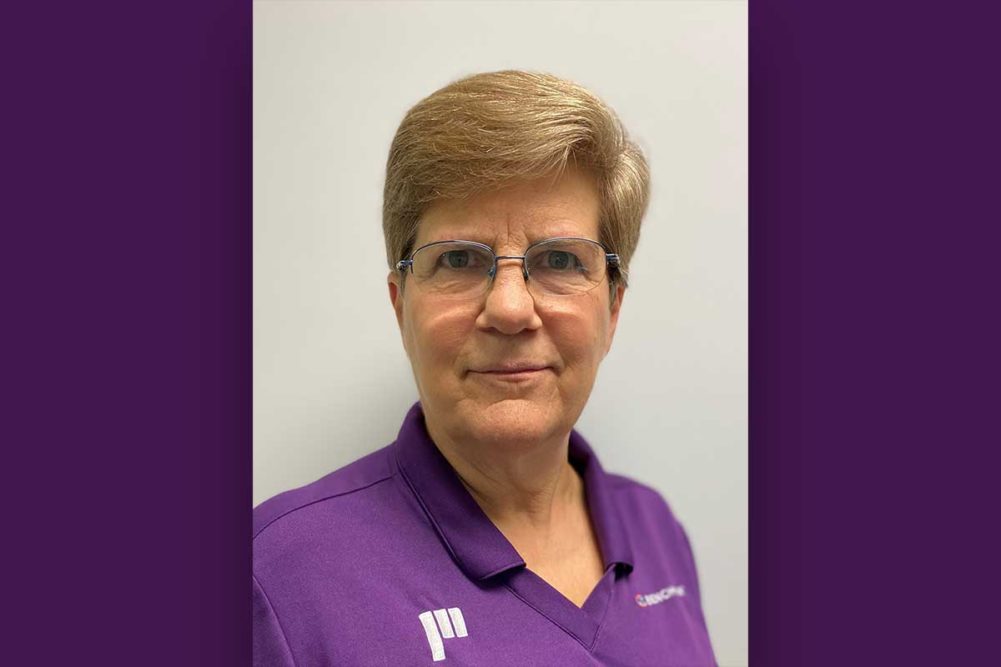Ann Hamil has worked in automation for more than 40 years, but said she ended up in the baking industry purely by chance.
“When I got out of college, I took a job with a large corporation and was very quickly dissatisfied with the pace of the projects I worked on,” she explained. “It felt as though I’d never see anything real come from my work for years.”
As she was looking for a new position, a friend recommended Ms. Hamil to a startup company doing automation in the food packaging industry.
“This was in the very early days of applying servo technology to machine controls,” Ms. Hamil said. “I have been working in this area ever since.”
Ms. Hamil spent more than 20 years at Automation Intelligence, which provided servo-based machine controls and integration services to OEMs and end users. She then joined Benchmark, where she’s led the company’s controls group, served as director of engineering and today works as vice president of technology.
Ms. Hamil, who holds a bachelor’s degree in electrical engineering from the Georgia Institute of Technology, says she loves the variety of her role, as well as the constant evolution of machine capability and the products used to control them.
“Benchmark makes many different machines and customizes them for specific applications, so every day brings new challenges,” she said. “As part of ProMach, we have the atmosphere and agility of a small company with the resources of a large company.”
One of the biggest challenges Ms. Hamil sees facing her field today is the growing number of smaller companies turning to automation amid a tight labor market.
“Making machines that accommodate the wide variety of products and frequent changeovers that these customers need can be very difficult,” she said.
Safety and sanitation requirements are increasing as well, often conflicting with one another and with the ease of operating and maintaining equipment, she added.
“On some projects, our engineers spend almost as much time designing effective ways to guard and clean the machinery as on the actual operating parts,” Ms. Hamil said.
What are the biggest benefits of automating
packaging for bakers?
One obvious benefit is labor reduction and the resulting cost savings. The tasks that are best accomplished by automation are highly repetitive, which is exactly what people are not good at doing for extended periods of time.
Another benefit is frequently increased production rates in a smaller footprint because machines are often able to handle products more quickly.
What are the latest technologies that allow bakers to automate this process?
The use of linear servos, and servos in general can greatly simplify mechanical designs. Electronic gearing and camming not only replace mechanical linkages, but provide the flexibility needed to accommodate a variety of product sizes and functions without the need for change parts.
Independent cart technology has opened up many opportunities to provide flexibility to machines that might have been impossible in the past or would have required extensive mechanical change parts to accomplish.
Robotics, particularly with flexible end effectors and coordinated with vision systems, can help automate the packaging of products that are fragile. Vision systems and sensors are becoming more and more capable of complex product inspection, both to ensure quality, and to eliminate product that might cause machine downtime before it gets into a machine.
What are some challenges bakers may face when automating their packaging?
While the rapid changes in technology allow much higher degrees of automation, the flip side is that the control platforms become obsolete much more quickly than mechanical machines. In addition, even with extensive diagnostic and troubleshooting capability built into the machines, the skill level of the maintenance staff needs to keep pace with the complexity of the equipment.
How does the type of bakery affect which packaging system or material is best?
We have to evaluate the product for every system before we can provide a quote. Most of the equipment we build is handling raw products: feeding, stacking, grouping, etc., to present it to a machine that will actually put it into a package. Product dimensions and tolerances, shape and consistency are key factors when considering what kind of machine can be used to handle the product. For example, a solution that is ideal for a snack cracker may reduce a rice cracker to nothing but crumbs. A machine that feeds cakes or cookies may not be able to handle muffins because of their top-heavy nature. Sticky, fragile and irregularly shaped products need different machines than bars or cookies.
Product presentation is also a huge factor. Is the product coming from an oven or freezer in a defined pattern, or is it random? How many different products run on the line, and how often do they change? What is the available footprint on the plant floor?
All of these things need to be taken into account when evaluating an automation project.
What are some pro tips for incorporating automation into the packaging department?
When specifying packaging machinery, consider not just the products you are making today, but what you might be making next year on the same production line. Adding in options that provide flexibility may cost more up front but may save money and/or provide opportunities in the long run.
Make sure that the equipment you are purchasing has extensive built-in diagnostic capabilities to help to quickly troubleshoot problems.
Many OEMs offer the option of remote support capabilities on their machines. While this is often at odds with the requirements of IT departments, remote access provides an invaluable tool for troubleshooting. Unless your maintenance staff has all the software tools and knowledge to diagnose and fix any problems on your machines, you should make sure to select this option on any complex system.





